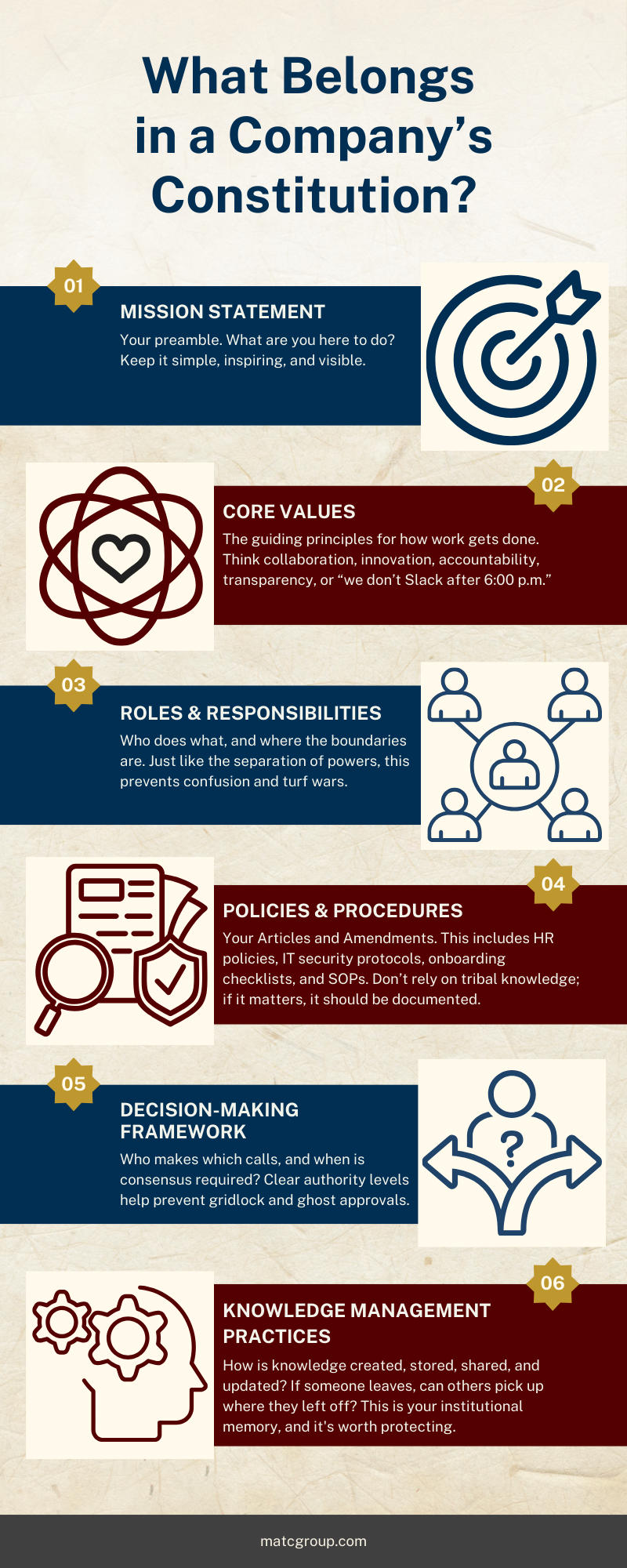- +1 (267) 368-7090
- contact@matcgroup.com
-
53 Knightsbridge Rd,
STE 216
Piscataway, NJ 08854.
On September 17, Americans celebrate Constitution Day—the anniversary of the signing of the U.S. Constitution in 1787. It’s easy to think of it as a dusty historical document, but at its core, it’s something every organization needs: a clear, structured, agreed-upon set of principles that guide how people work together.
In other words, it’s the original employee handbook.
Before you yawn and click away, consider this: your team may be working hard, but are they all working from the same playbook? Can they refer to a central source that defines your mission, values, processes, and expectations? If not, you may be running your organization on guesswork, and we all know how that ends (usually with a 37-email thread and a panicked Zoom call).
Let’s take a closer look at why your company needs its own “constitution,” and what that should include.
The U.S. Constitution provided a common framework for 13 wildly different colonies to operate under one system. Likewise, your business probably includes people from different departments, backgrounds, and goals. Foundational documents ensure:
Without them, you’re left with silos, confusion, and employees who make up their own procedures like musicians without sheet music.
You don’t need to print it on parchment, but you do need to write it down. Here are the modern equivalents of constitutional elements every business should have:

Even the best documents won’t work if no one reads them. That’s where training and instructional design come in.
And yes, your foundational documents should evolve. Just like the U.S. Constitution allows for amendments, your internal documentation should be regularly reviewed and updated to reflect how your business grows and changes.
Great leadership isn’t about having all the answers, but creating systems where people know where to find the answers. Your company’s constitution might not sit in the National Archives, but it should live where everyone can access it, learn from it, and contribute to it over time.
Because whether you’re governing a nation or guiding a team, the same principle applies: clarity creates cohesion.
How Documentation Anchors Distributed Teams (and Keeps Us from Drifting Into Chaos)
How Documentation and Training Helped the Rebels Blow Up the Death Star
Burnout, Meet Your Match: How Knowledge Management Keeps Teams Sane